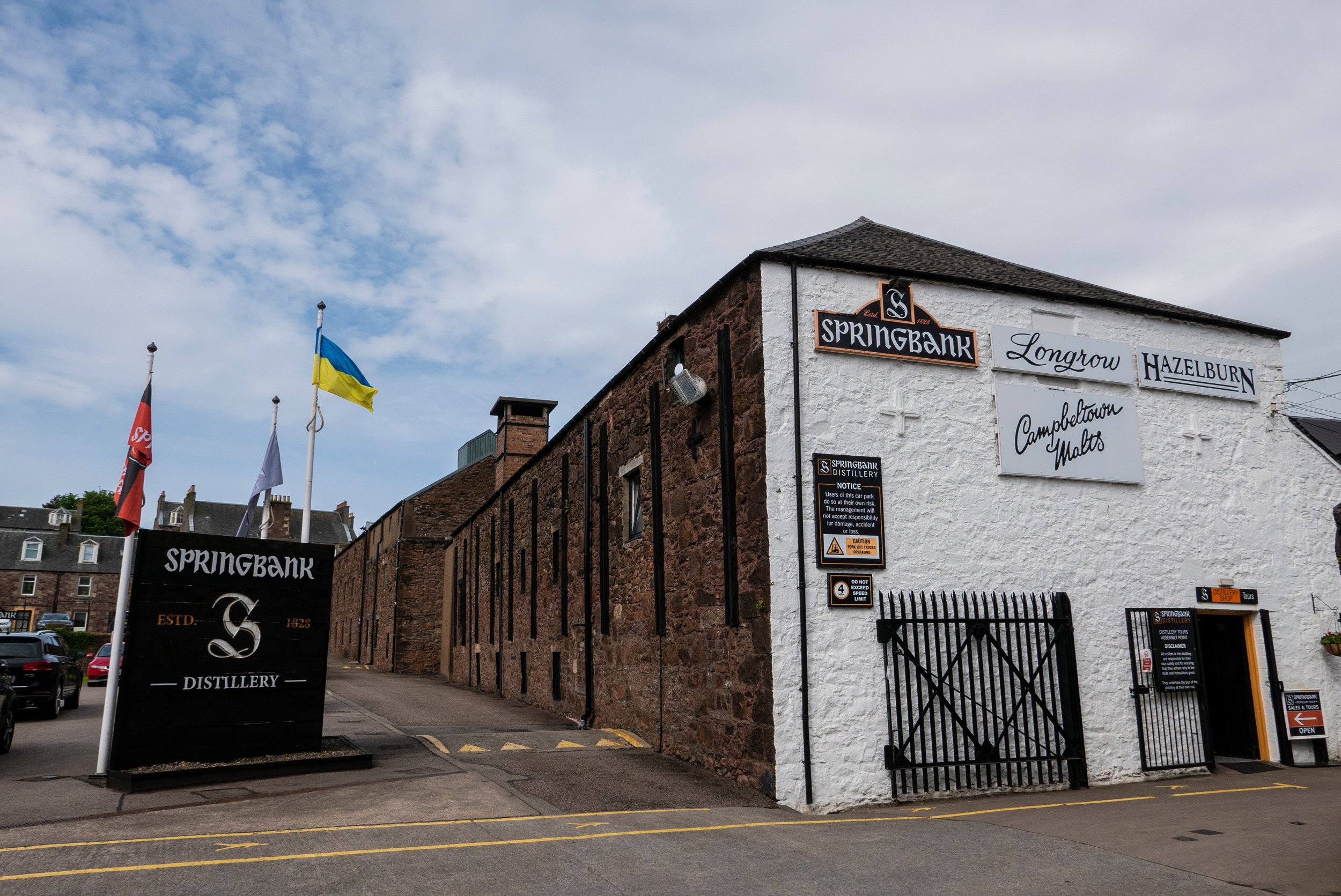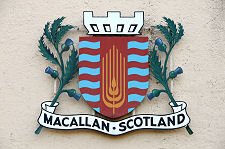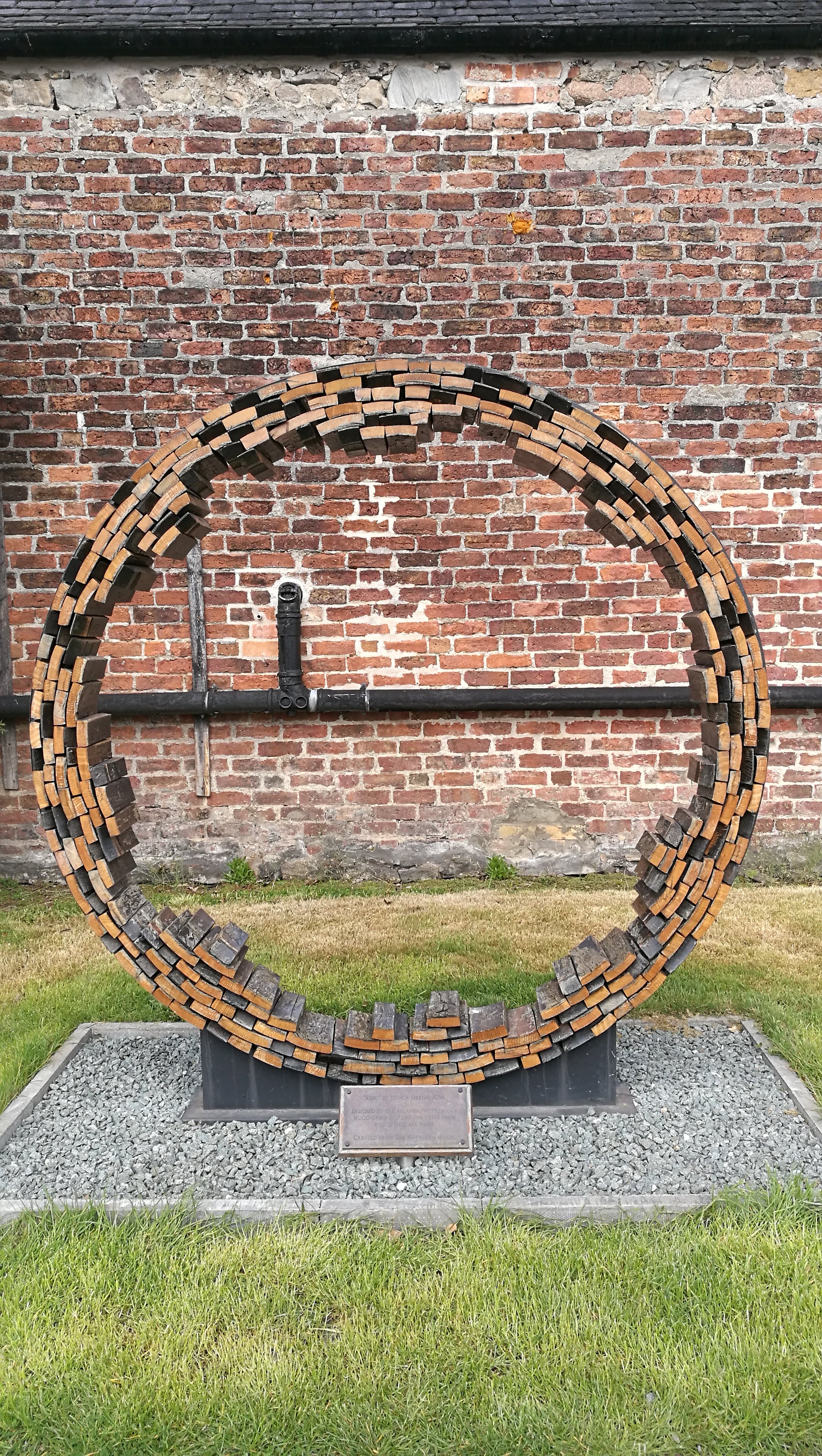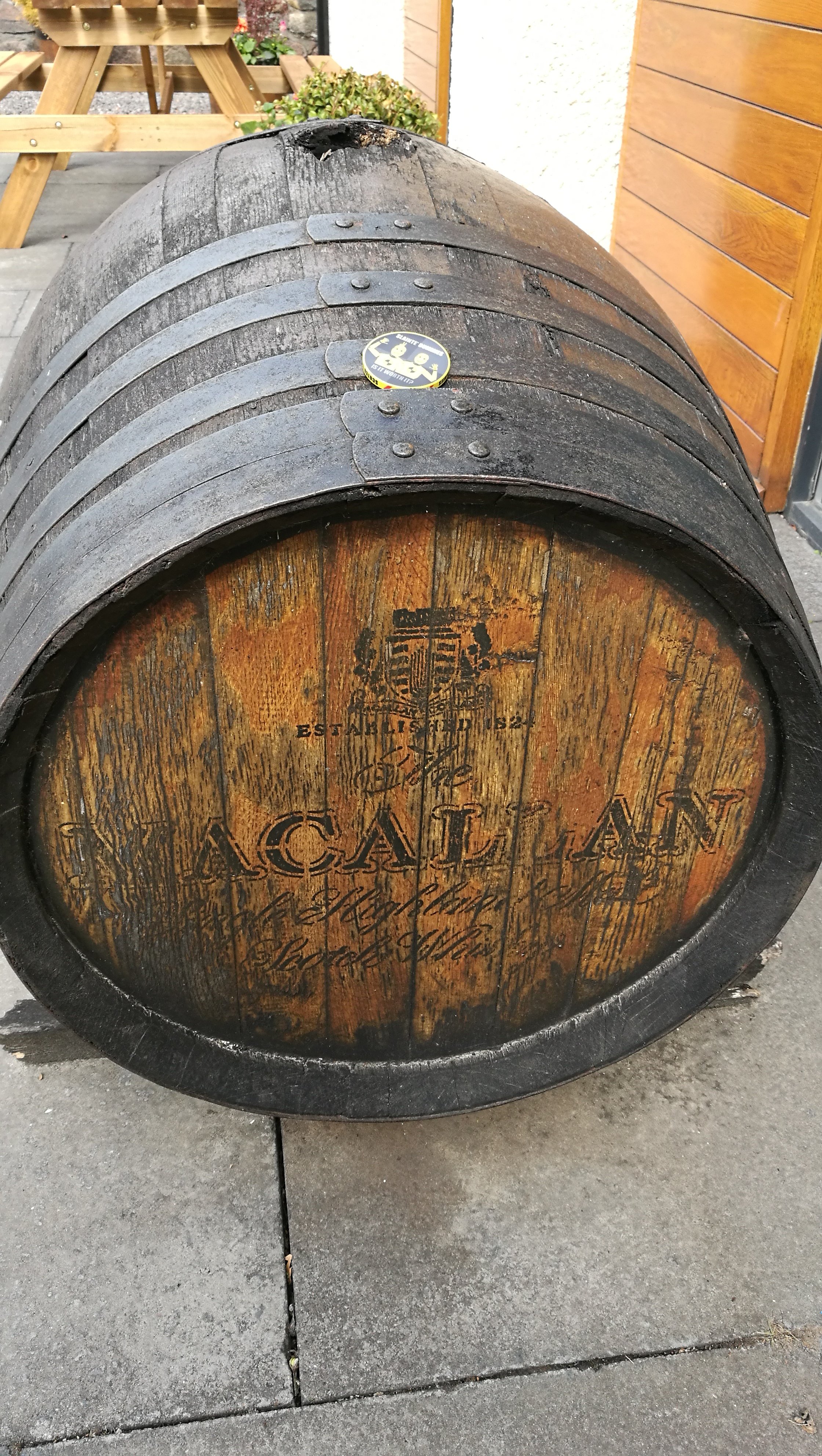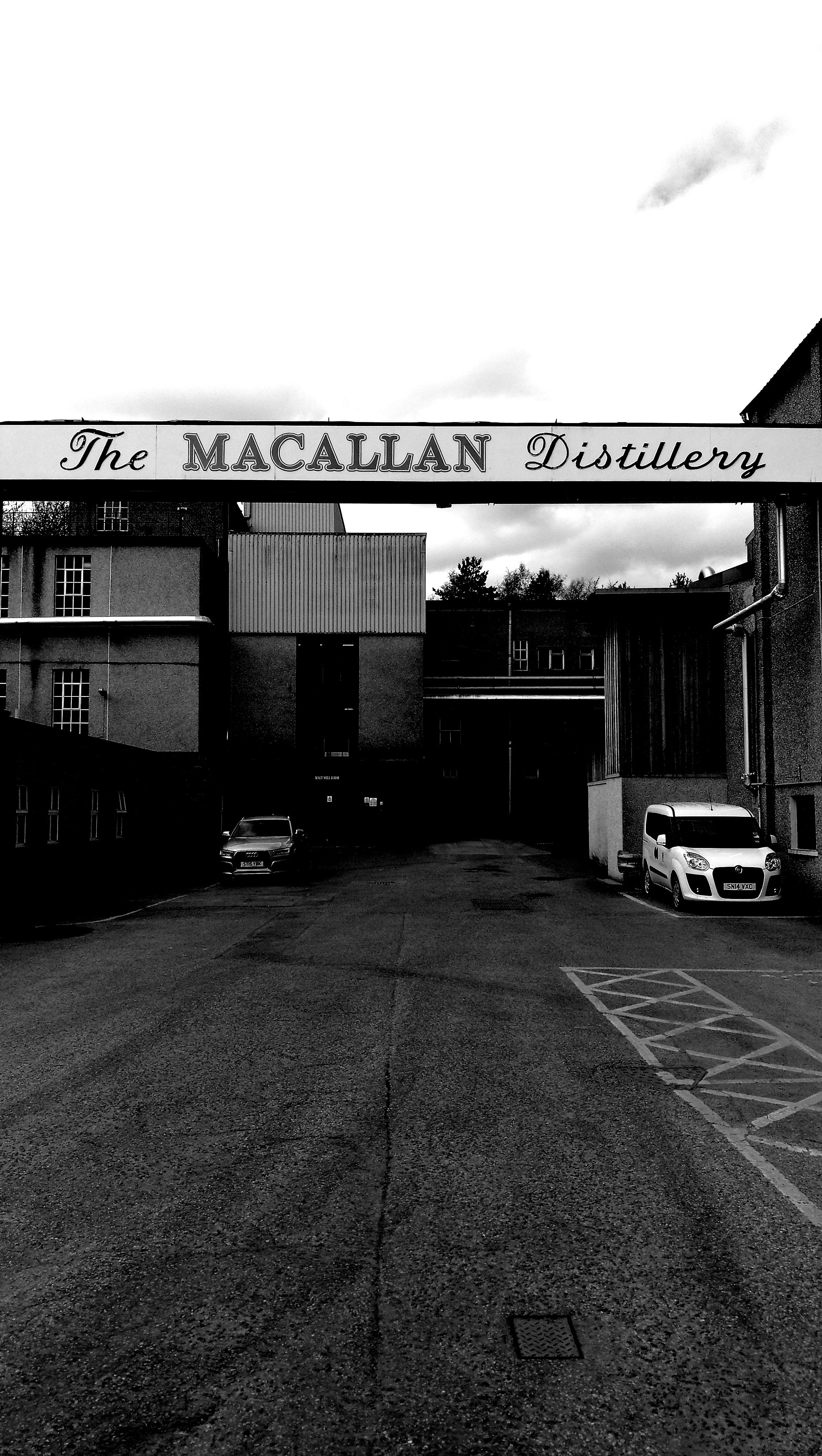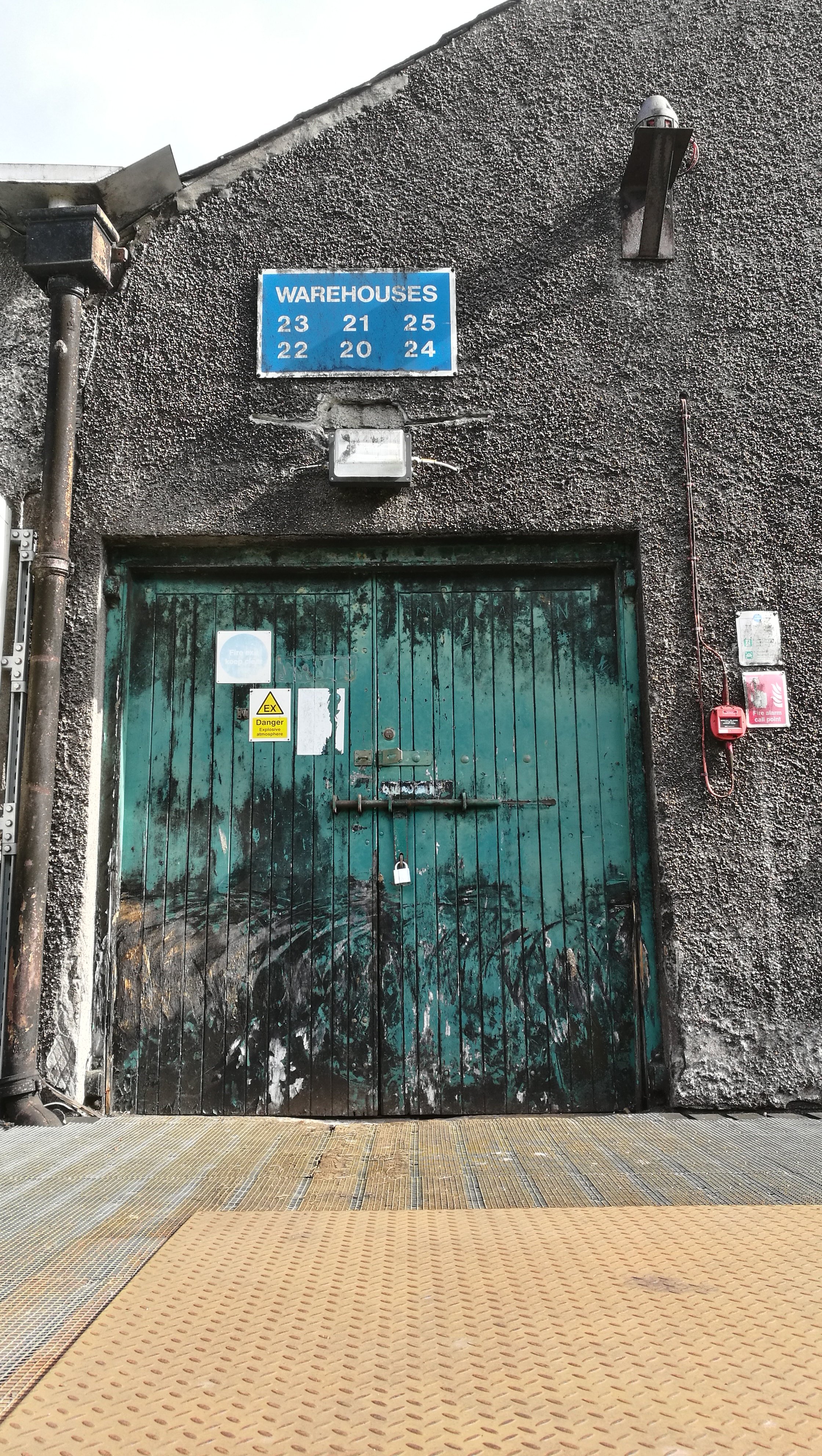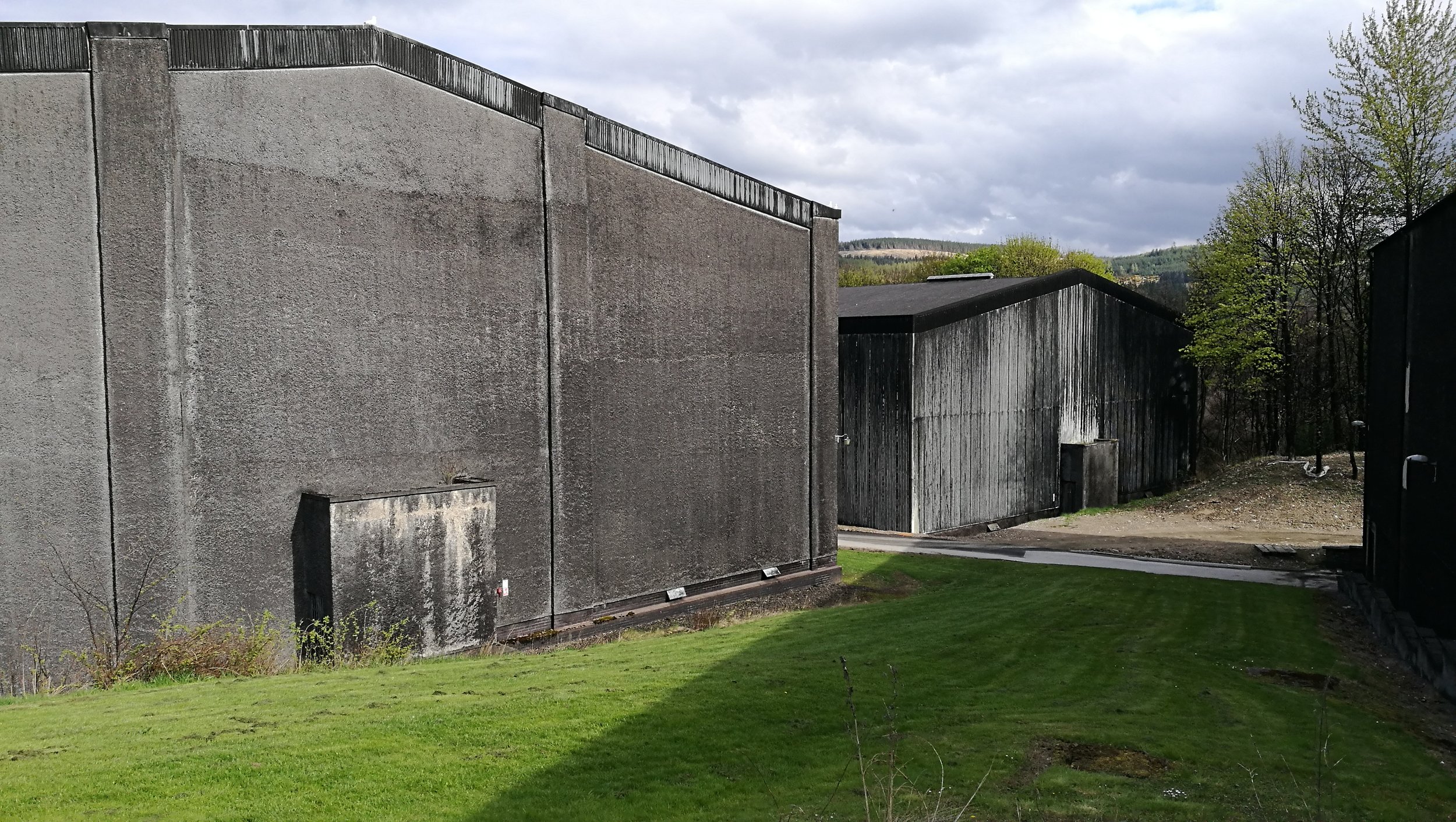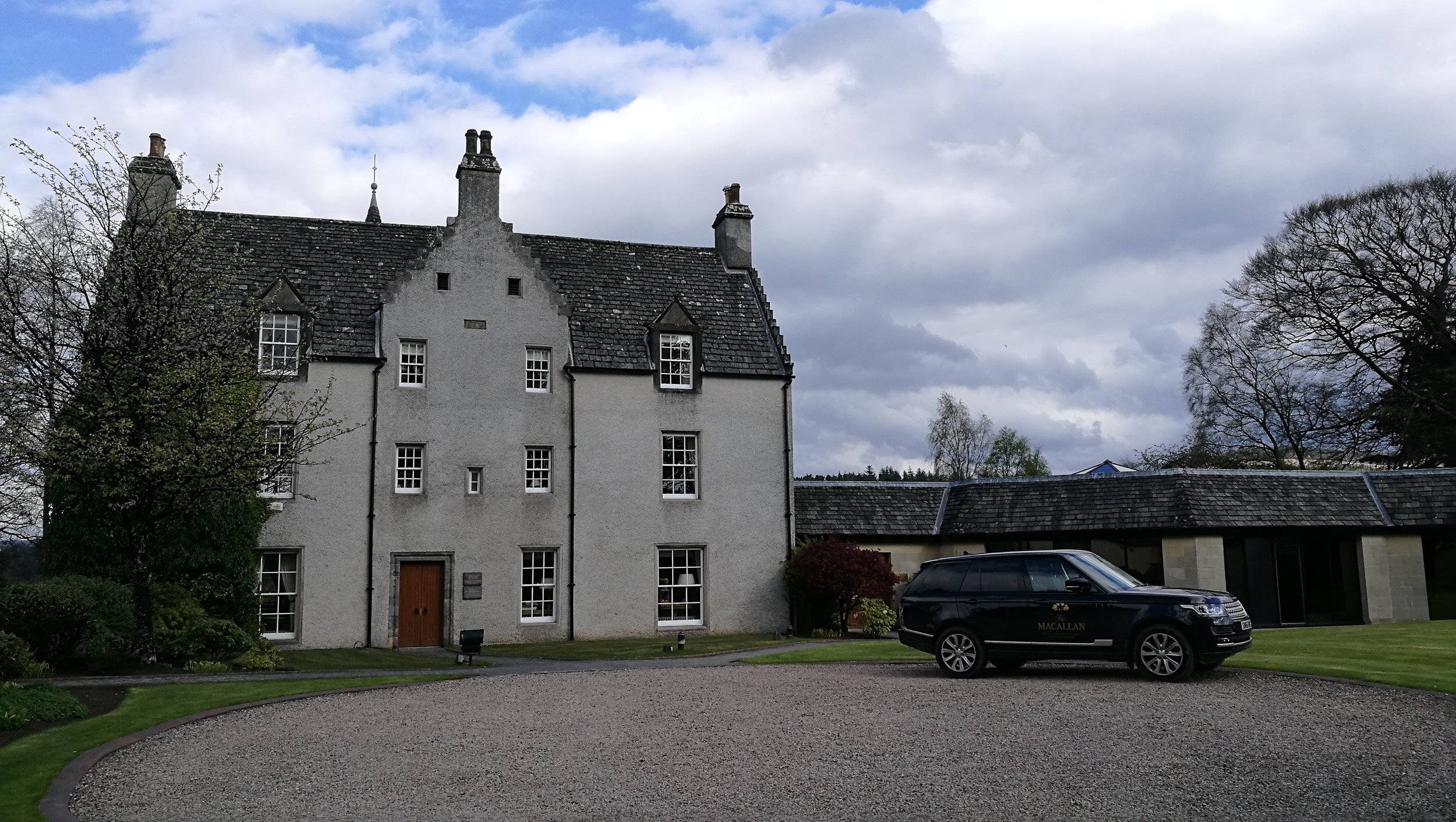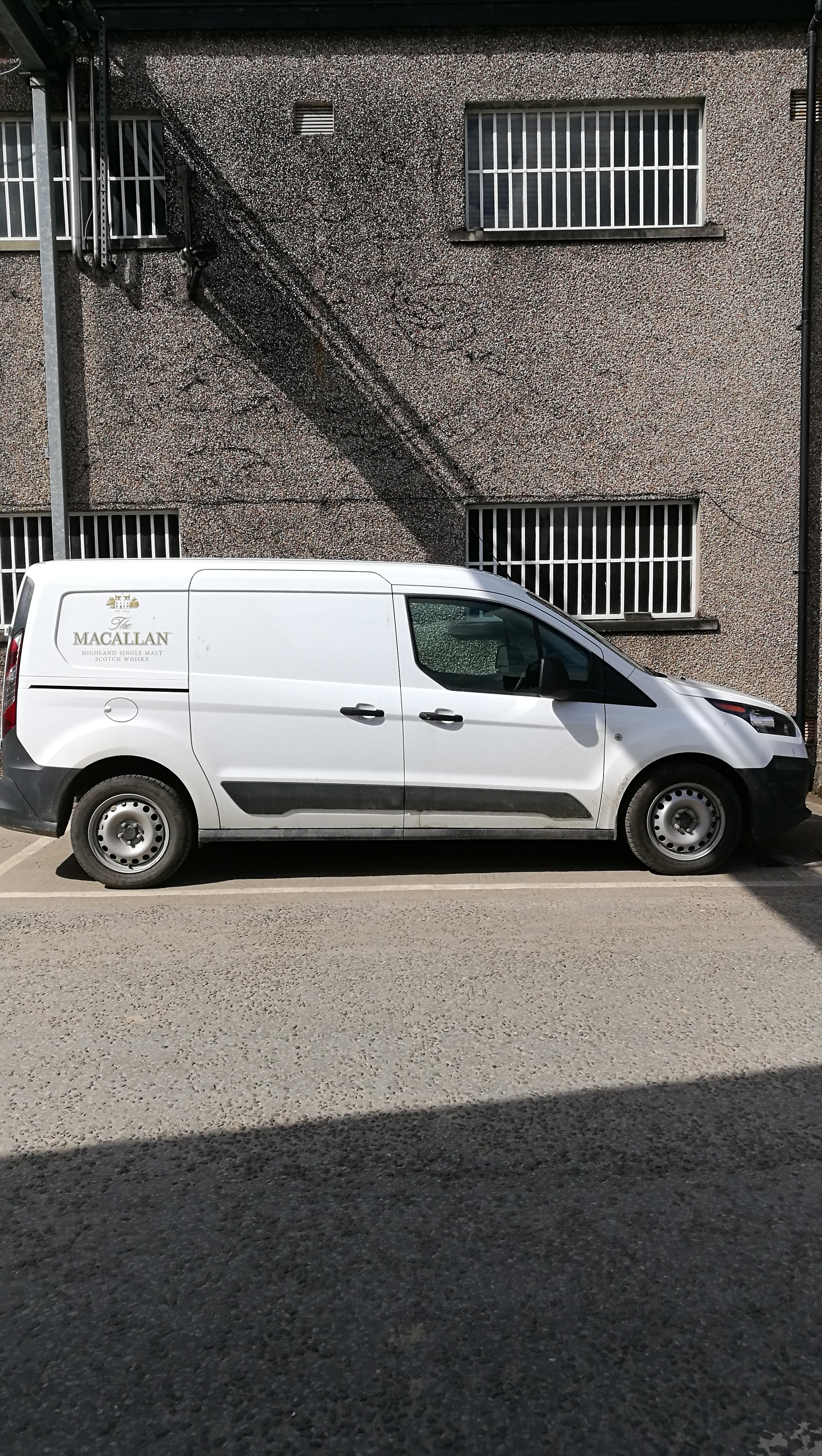Will the Real The Macallan Please Stand Up
In 1985, The Macallan Distillery successfully filed for planning consent to demolish a series of outbuildings that had been tacked on to their ‘iconic’ Easter Elchies House. Life imitated art as the house was brought back to its ‘ideal state’: the isolated country residence represented so persistently on Macallan labels. Even this was a strange kind of artifice, though. In the same year they tacked on a rather odd pair of octagonal extensions to the building.
You will not recognise these extensions, because every time The Macallan’s pin-up building has been professionally photographed since 1985, the camera has faced the same direction. That is to say, pointed to the south-east, well away from those two structures that look like grounded Caledonian UFOs. On the bottle where there is a drawing of Easter Elchies House, the UFOs are neatly obscured by their favourite brand of tree—oak—rendered in gold.
I am aware of how much ire is already directed at ‘The’ Macallan. It is a favourite target of ridicule, and given the patronising implications of their marketing this is unlikely to change, at least for us whisky geeks. The key thing which irks me is the way ‘oak’ is marketed by them as if they invented the tree in 1824, some kind of USP of their special liquid. As many readers will know, oak is in fact stipulated in the Scotch Whisky Association’s legally binding definition of scotch whisky. Everyone is using oak because they have to, and as to the ‘fineness’ or otherwise of said lumber, we’ll be the judge of that, thank you very much.
On the other hand, the volte face that THE Macallan has engaged with between the beginning of the 21st century and today makes a very interesting case study indeed. A case study in what, exactly? A case study in the problems that old distilleries inherit, and how they redevelop themselves out of the corner that they have built themselves into over decades. More importantly, there is the whole matter of heritage, authenticity, and aesthetics. These three ideas do not necessarily work in harmony with one another. What’s authentic about a distillery might be quite recent; where its heritage lies may not be all that aesthetically pleasing; and so on.
The new Macallan distillery (completed in 2018) was seen by so many as a perfect symbol of the ‘experience’ or ‘image’-focussed distillery. The shiny new distillery was framed as a callous rejection of their heritage, a heritage that the brand simultaneously leans so heavily on for label spiel. But I think we need to be a bit fairer on Macallan. The state of their distillery before 2018 was not pretty. It was, frankly, something of a mess. Crucially, it was not a picturesque mess.
Macallan in, say, 2008 made Clynelish distillery look like Himeji Castle. I would even go as far to say that the Clynelish distillery has a thoroughly decent, memorable design: the building is a straightforward rectangular shed with giant windows and a thin, industrial chimney tacked on the side. Give a random whisky nerd a pencil and I think they could draw out a thumbnail sketch of it from memory. Macallan’s old distillery lacked any of that coherence. Give a whisky nerd a pencil and tell them to draw out The Macallan, and they would present you with one of two options. The first option would be a sine wave roof and some struts, a rendition of their new building—memorable, you have to admit, after less than a decade. The second option, tellingly, would be a rendition of the Easter Elchies laird’s House: a residential building wholly unrelated in its original function to the practice of making aqua vitae.
Easter Elchies House is the only listed building on the whole Macallan estate, other than the burial ground and mausoleum associated with the House’s former owners. As scotch whisky distilleries go, this is a pretty poor inheritance. Take Springbank: the working core of distillery buildings are all covered under the Category B list. Listed buildings, in Scotland and the rest of the UK, are legally protected structures due to their special architectural interest. The Springbank complex is within the Campbeltown conservation area, which aims to protect the special interest of the core of the old ‘Whisky City’ as a whole. Even if Springbank did have some radical change of direction and decide to do a Macallan style rebuilding project, they probably couldn't by law. That is, unless they moved a fair while outside of their hometown.
Laphroaig is listed, Bunnahabhain is listed (which may surprise some, though it’s also worth noting that several prisons throughout the United Kingdom are listed), the old Port Ellen distillery is listed and Oban is listed. There are numerous others which aren’t listed in western Scotland that might be surprising, and these are often as beautiful to look at as they are to taste. Sure, perhaps the west of the land is unrepresentative. To compare Macallan to its fellow speysiders, it’s enough to know that Strathisla is Category A (the highest grade) listed, Speyburn is listed, and Mortlach is listed in part. You get the idea. The Macallan’s insistence on their laird’s house is a compensatory gesture.
The Campbell, Hope and King bottling and its fishy “coat of arms”
The distillery did not always place this laird’s house at the top of their label. From the 1950s to the 1970s, the liquid was officially bottled by Campbell, Hope and King. Throughout this period, the Easter Elchies building did not feature. Instead, there was another, somewhat dubious claim to historical cachet in the form of a ‘coat of arms’. But this coat of arms was, as far as I can tell, totally illegitimate. It takes the form of two supporting lions and an oval shield with a big thistle on it. In Scotland, coats of arms are a legally restricted privilege which must be approved by the Lord Lyon King of Arms. The oval shield (not a standard heraldic shape) then, is designed to look like a coat of arms but not be too close as to create legal issues.
The new coat of arms
The pseudo arms were ditched by the early 1980s, and what appears to be a proper coat of arms (presumably licenced by the King of Arms) takes its place. The coat is now attached to the side of one of the old distillery buildings—note, nowhere to be seen in the new facility—and is distinctly ‘zany’. There is a golden set of barley ears in the centre, and a bright red background with teal wavy lines over the top (presumably a stand-in for the river Spey). The barley ears in the centre are not a historically known ‘blazon’ (technical term for any image that makes up a coat of arms), and so it’s obviously a rather recent design. It should be noted that one doesn’t get a coat of arms by accident: the company will have to had signed a formal ‘petition’ to the King of Arms and paid up for various fees (I do not know how much, though). At around this time, Easter Elchies house slowly crept its way onto the Macallan bottle. Initially, there was a watercolour image on the 1980s boxes of the liquid representing a famous but irrelevant bridge in Speyside. Next this was replaced by the laird’s house itself, but kept out of the label. Finally, in the 2000s, Easter Elchies took the throne that the coat of arms once did.
As I write this piece, I wonder if I’m over-fixating on The Macallan’s labelling history, creating an unfair parody of their branding. But it turns out that they are in the act too: I was forwarded a press release from the distillery which effuses on the profound resonance of red ink on their labels: “In 1903, owner Roderick Kemp launched The Macallan Choice Old range, reportedly shipped in cases labelled with distinctive red print to distinguish it from the brand’s existing whiskies, which featured black labelling.” The profoundness of red ink is even more profound than that, however: “The red thread begins with Alexander Reid, the farmer and teacher who founded The Macallan in 1824. His surname means ‘the red one’ in Scots and was originally associated with red hair.” If the distillery is willing to delve into the colour of their owners’ ancestors’ locks for inspiration, then I think that provides us with carte blanche (should that be carte roux?) to make our analysis as complex as we want. I think it is fair to say there were many meetings held about the decisions to buy a coat of arms or bin them, and to print watercolours of Easter Elchies house on boxes or little logos of it on bottles. These are intensely self-conscious decisions.
History sells. But whether you’re inventing that history from scratch, or re-packaging it, the way you do so is dependent on fashion. The conventional wisdom of marketing changes over time. What seems classy today comes across as gauche in the next decade. Hence Macallan spending a (presumably large) sum of money on getting a coat of arms, and then quietly removing it from view. Fashion works differently for different people, however. Whisky geeks definitely resent the over-selling of history. We probably prefer the older bottles of Macallan that look a little past-it to the new Double Oak bottlings and so on. Sure, the decline in ABV and the ditching of age statements has a lot to answer for. But it’s also true that we prefer those older bottles because we, too, are susceptible to the lure of history.
Re-enter Springbank. There’s a distillery whose machinery and buildings have a 19th century flavour—well, a stench really. Their spirit safe is caked in verdigris from the corrosion of copper, their buildings are a dank haven to algae. But the distillery is exceptionally lucky to have inherited this: their buildings have escaped modernisation campaigns for decades and decades. The Macallan had no such luck. And yet, through consistent marketing campaigns (and some decent whisky a number of years ago) the distillery has achieved stratospheric auction prices and a reputation for exclusiveness and ‘heritage’. Macallan is, in the rather nasty English classist term “old money.” But the distillery where that heritage and reputation was made just doesn’t play the part. To reiterate, it is a collection of sheds, mostly of 20th century appearance and clad in a thrilling mixture of pebbledash and corrugated metal. Strangely, these things don’t feature in watercolour on their boxes…
Whisky geeks are fickle people. We do want to ‘taste history’, at least some of the time, even if that phrase could easily be seen on written in the authenticity certificate of a record breaking Macallan in expensive glass, wood, or cast bronze pedestal in the shape of veiny hands (oh, and before you say “isn’t that a bit of a reach”...). And if I may say so, there is a little hypocrisy in how we are often most engaged by the oldest malts, while publically reciting the mantra that “older isn’t better, just different”. I’d also suggest, by the way, that Springbank is so beloved by us all because all their liquid exhibits ‘age’: a dusty, sour or funky character from only 10 years’ maturation.
As for the distillery buildings for themselves, we do want to be impressed when we visit them. We have often bought the product for years beforehand: we have expectations and memories tied up with what distillers make. And it has been a long time since whisky was a ‘bootleg’ product made in actually small batches: distilleries are big places with impressive copper stills and industrial noise. We want to be hit with all this, a sensory impression far more loaded and emotional than smelling and tasting a liquid in controlled conditions.
I’m not making these points to play Macallan’s advocate. What I’m trying to express, in the end, is just that there is some common ground between the types of experience we want to encounter and what hyper-branded distilleries try to provide. The Macallan attempts to give us what we want (a ‘historical', quality driven malt) but fails in the execution. We prefer a place to ‘keep it real’ rather than dress up for exclusivity’s sake. But it still helps if there are some good stories, and some pretty buildings along the way.
AB
Thanks to Dallas and Wally for additional images.
-
Dramface is free.
Its fierce independence and community-focused content is funded by that same community. We don’t do ads, sponsorships or paid-for content. If you like what we do you can support us by becoming a Dramface member for the price of a magazine.
However, if you’ve found a particular article valuable, you also have the option to make a direct donation to the writer though their ‘Buy Me a Dram’ links. You’d make their day. Thank you.
For more on Dramface and our funding read our about page here.







